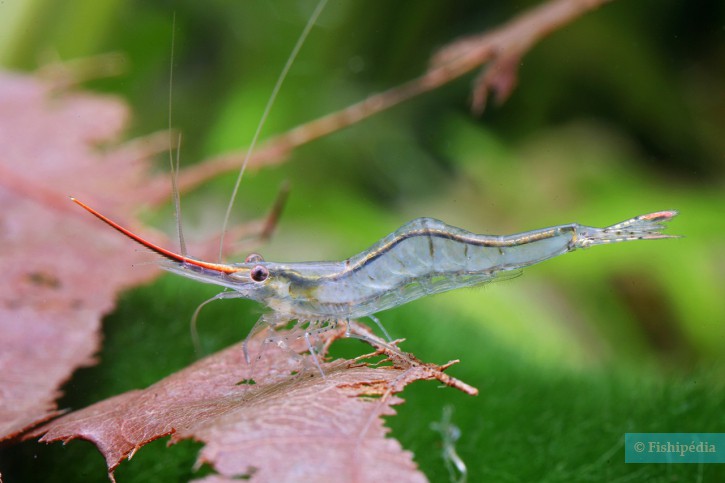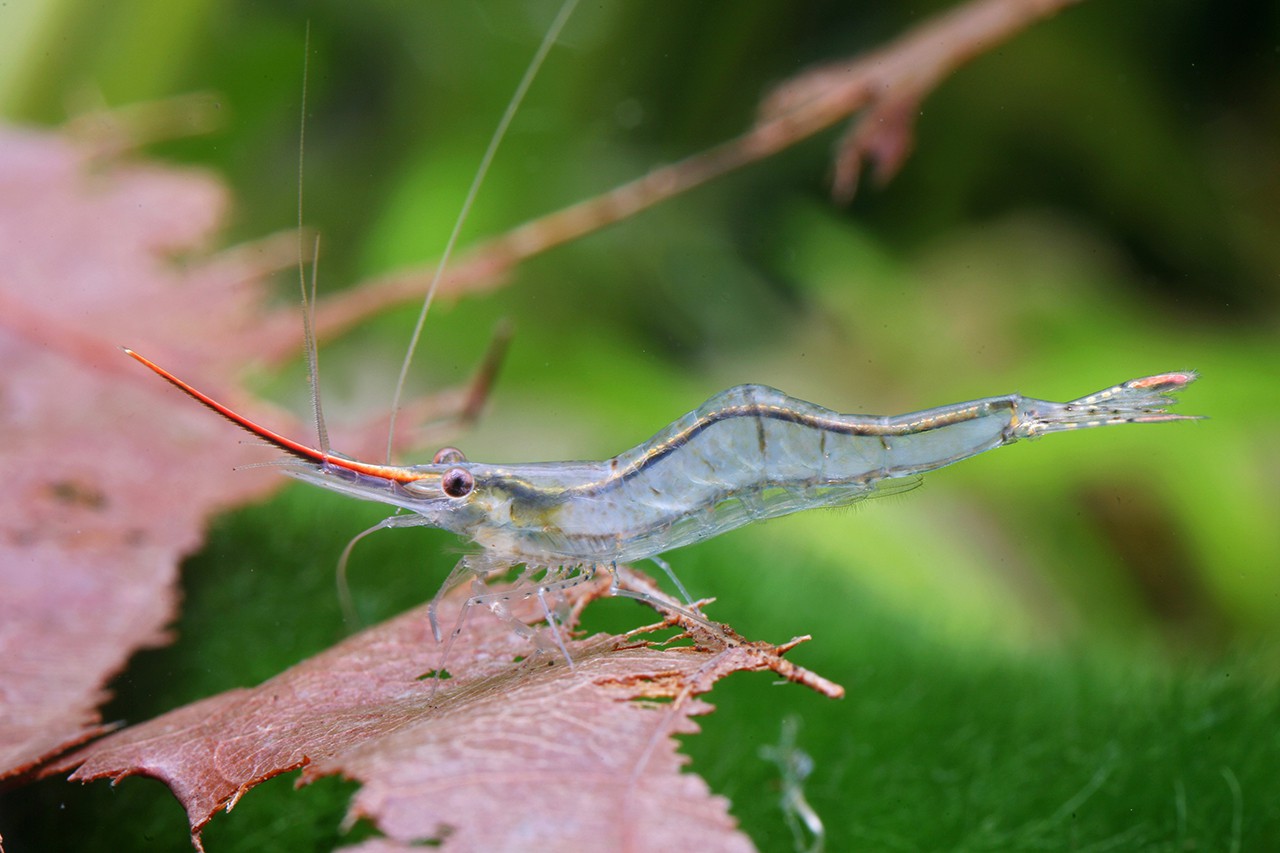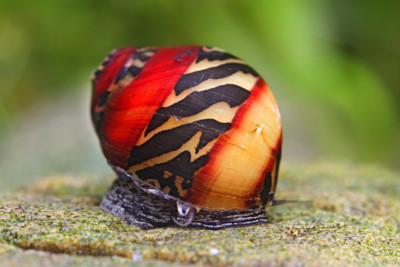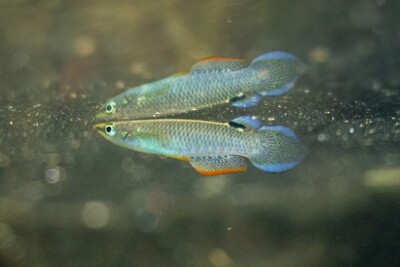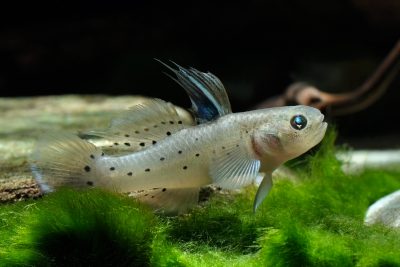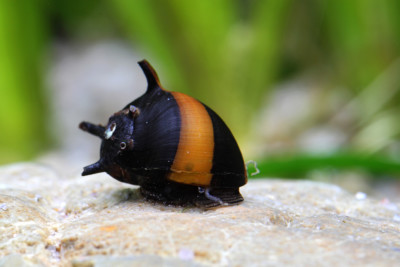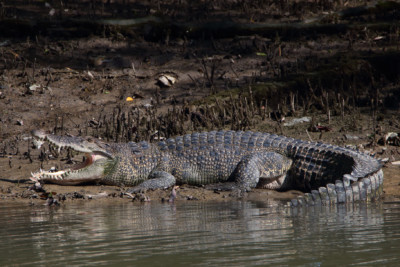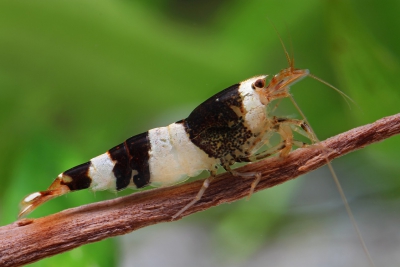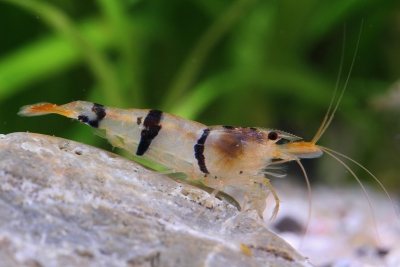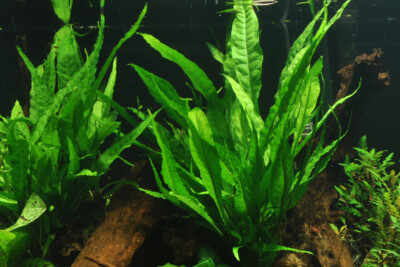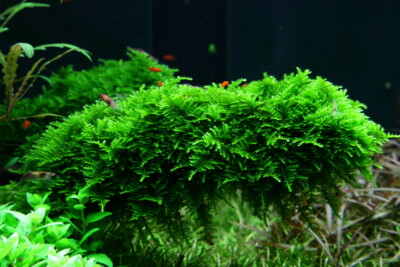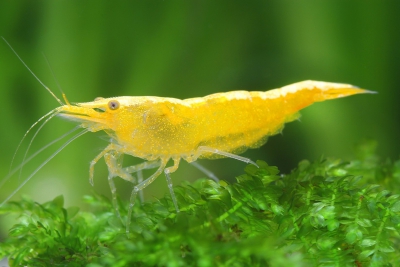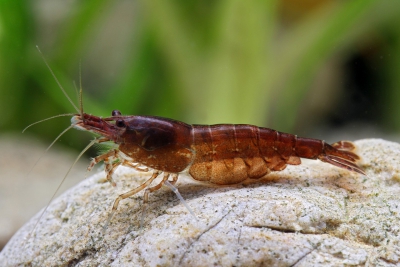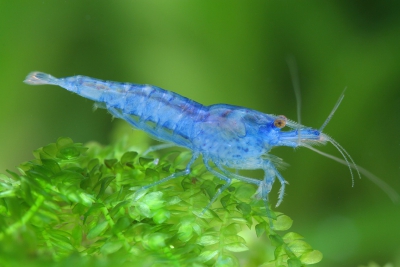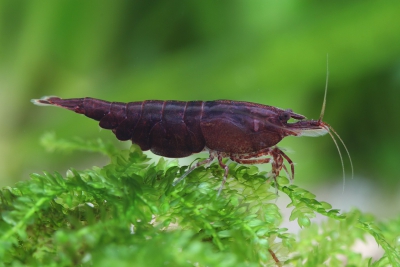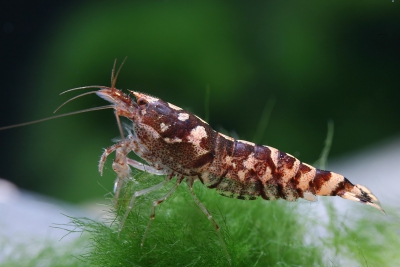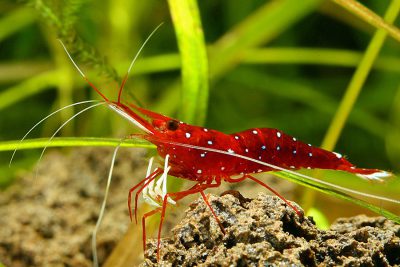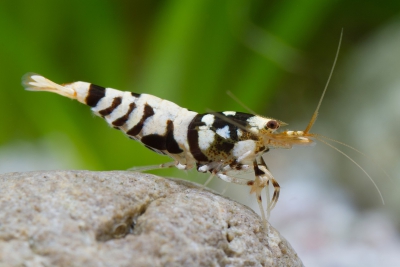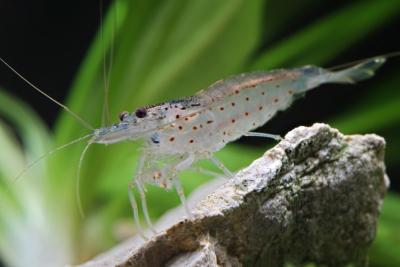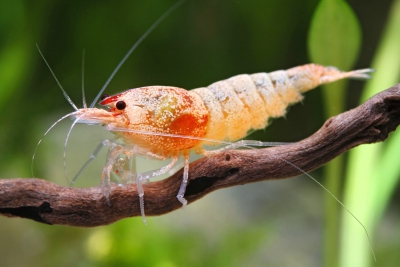Introduction
Caridina gracilirostris is a little fresh water and brackish water crustacea from the Asia.
This sheet is currently being prepared. The texts currently proposed come from our data model or are being drafted. To request priority for this content, you can write to us HERE.
Who is it?
Morphology
-
Type
-
Average size3 cm
-
Maximum size4 cm
-
Type
-
Average size3 cm
-
Maximum size4 cm
How to recognize this crustacea ?
Caridina gracilirostris measures between 3 and 4 cm. Given its small size, this species is commonly referred to as a "dwarf" animal.
Of elongated form, like all the shrimps, it has 5 pairs of legs and a segmented carapace at the level of the abdomen which ends in a tail in fan cut for swimming.
Behaviour & Life cycle
-
Sociabilityliving in colonies
-
territorialNo
-
VenomousNo
-
Way of livingdiurnal
Like all crustaceans, Caridina gracilirostris molts whenever it becomes cramped in its shell. Before the hardening of its new body, it is more vulnerable and spends a good part of its time hidden. This mechanism, very complex, allows the periodic renewal of the exoskeleton and part of the internal skeleton. It is also during the moult that the females become fertile.
Caridina gracilirostris is a crustacea living in colonies naturally found on the bottom. This species is herbivorous . Measuring only a few centimeters, this small species tends to be discreet and hide in the presence of larger neighbors.
n general, this species does not care much about other animals crossing its path.
The cilia located on the legs and tail facilitate swimming, which is done in leaps when the abdominal muscles contract.
Reproduction
-
Migratory speciesYes
This species is amphidromous. It gives birth to larvae in fresh water which are immediately carried by the current of the rivers to the sea. These develop in salt water until a juvenile stage and then migrate from the sea to the interior of the land to continue their growth.
Harmless species
This species does not represent any particular threats to humans when encountered in its natural environment.
Origin and distribution
Conservation status of populations (IUCN)
What is its habitat?
Natural environment characteristics
-
Temperature22 - 29 °C
-
pH (acidity)6 - 8.5
-
gh (hardness)10 - 25
Biotope presentation
Caridina gracilirostris is found in rivers, marshes and seaside creeks. With the influence of the tides, the water changes constantly in salinity.
Species of the same biotope
Main recommendations for fishkeeping
Deontology
In order to preserve wildlife, if you acquire this animal, it must not be released into the wild. See also, the Fishipedia charter.
Fishipedia supports the practice of responsible and environmentally friendly aquarium keeping. We encourage maintenance if it is motivated by a desire to understand the biological functioning of living things and if it is done with respect for animal life.
We believe that aquaristics is an opening to the discovery of aquatic environments, especially freshwater, and that this knowledge is necessary to better protect and respect these environments. Logically, we refute the compulsive purchase of animals that would not find a sufficient and / or adapted place in the host aquarium.
Our recommendations
-
Min volume60 liters
-
Population min5
-
Temperature22 - 29 °C
-
pH (acidity)6 - 8.5
Characteristics
-
Type of maintenanceAquarium
-
Maintenance difficultyhard
-
Availabilityoccasional
-
Behaviourpeaceful
-
Robustnesstolerant
-
Environmentfresh water and brackish water
-
Breedingbrackish water
Recommended equipment from our partners
-
Aquarium
-
Filtration
General reminders
It is strongly advised to read the complete dedicated file and to get information on the feedbacks of maintenance of the envisaged animal, this to avoid any potential conflict whose end result is generally the death of the individual (or the other inhabitants). It is important not to overload your aquarium to limit pollution. This will make maintenance easier.
In nature, animals are subject to weather conditions and live in waters with variable characteristics. The recommendations offered by our team for aquarium maintenance are a guidance and cannot be assimilated to scientific datas.
General reminder on maintenance datas
Le démarrage d'un aquarium est une partie primordiale pour l'équilibre et le bien-être des poissons. Lorsque l'on met en eau un aquarium, l'eau passe naturellement par un cycle biologique : le cycle de l'azote. Celui-ci dure environ trois semaines. Tous les 2 jours, nous vous conseillons de tester votre eau jusqu'à ce que le taux de nitrite soit à zéro pendant plusieurs jours d'affilée.
Pour accélérer ce cycle, vous pouvez utiliser un activateur de bactéries comme JBL Denitrol. Cette solution riche en bactéries vivantes et enzymes permet une mise en place rapide du cycle de l'azote. Les poissons peuvent alors être introduits plus rapidement.
Il est important de tester l'eau de son aquarium régulièrement pour maintenir un environnement sain pour les poissons et les autres habitants. Les tests d'eau permettent de mesurer les niveaux de différents paramètres tels que le pH, la dureté totale, ainsi que les taux de nitrates, de nitrites et d'ammoniaque.
Pour réaliser ces tests, vous pouvez utiliser des produits d'analyse spécialisés tels que JBL ProScan qui permet de réaliser un diagnostic de l'eau directement via un smartphone. Il existe également des coffrets de tests plus classiques de bandelettes, comme JBL PROAQUATEST.
En cas d’usage de l’eau du robinet, vous pouvez utiliser un conditionneur d’eau de type Biotopol de JBL pour éliminer les substances nocives comme le chlore, le cuivre, le plomb et le zinc. Une eau trop dure ou trop calcaire peut être inadaptée à de nombreuses espèces tropicales d’eau douce. Si nécessaire, vous pouvez la couper avec de l’eau osmosée ou de pluie filtrée afin d’obtenir une dureté plus adaptée aux besoins de vos poissons et de vos plantes. Les conditionneurs d'eau garantissent une meilleure santé aux poissons et une meilleure croissance des plantes.
Chlorine and chloramine are dangerous for the health of animals. Used to disinfect water, these agents are present in significant quantities in tap water. We recommend using an anti-chlorine agent every time you change the water. In addition to chlorine, treatments and medicines sold for aquarium use sometimes contain dangerous heavy metals in high doses.
Specific needs for Caridina gracilirostris
Caridina gracilirostris is a species which lives naturally at a temperature between 22 °C and 29 °C. Nitrate levels should remain below 50mg/L. To keep the water clean and unpolluted, plan on changing 20% to 30% of the water volume each month.
Caridina gracilirostris is a species whose maintenance is rather reserved for informed aquarists . It can only be successfully carried out by carrying out a minimum of documentation work. Special husbandry conditions can easily lead to the death of the species.
This species is generally available in specialized shops or from aquarium clubs. Specimens that have been bred for a long time are easier to breed, but special water parameters must be respected.
Copper is toxic to many invertebrates. Some fertilizers and aquarium foods contain copper sulfate and should be used with caution. Since Caridina gracilirostris are sensitive to copper, we do not recommend using these products in any form.
Cohabitation & Environment
Caridina gracilirostris being {labels.demonstrative_current_species}} brackish water crustacea, its maintenance requires very specific water conditions.
Although the species can live part of its time in freshwater, salt intake is recommended . The species can be acclimatized in freshwater for a short period but requires continued growth with slight salinity . this crustacea tolerates density deviations very well. In fact, in its natural environment, this parameter fluctuates naturally depending on the intensity of the tides. nitially, a decoration made up of limestone rocks and coral sand can participate in a good water balance. . Usually, powerful filtration is required to properly stir the water.
If you opt for maintenance in an evolving tank setting, with salinity gradually increasing with the growth of the animals, it will be necessary after several years to add a skimmer . This type of maintenance is very difficult although fascinating because as close as possible to the living environment of the species concerned.
Being a living in colonies crustacea, it is advisable to install at least 5 individuals in an aquarium of 60 liters minimum. The maintenance in groups allows to observe its natural behavior within the aquarium. Although sometimes certain groups can "merge", mixing several gregarious species living in the same zone of life is not recommended if the volume is not consequent.Caridina gracilirostris is a peaceful species that generally does not exhibit behavioral problems in a community aquarium.
Due to their fragile state during moulting, all crustaceans need an environment provided with hiding places (roots, pebbles, leaves, plants, etc.) to shelter in case of danger.
It should be noticed that this species should not be kept with large crustaceans or fish, as it would become a prey of choice. Smaller species should preferably be inserted in the aquarium some time before the larger ones. Moreover, if you want to breed it, it is better to put them in a specific aquarium.Tips for feeding
This shrimp accepts the majority of foods available on the aquarium market. You can of course feed it with products specially adapted for dwarf Shrimp. Besides artificial food, most of its food needs can be met by elements already present in the aquarium. Indeed, naturally, Caridina gracilirostris will feed on algae and microorganisms present in the vegetation and the decor. Adding decaying leaves (oaks, alders...) or a few remains of dead plants will ensure the basis of the diet of this species, these elements constituting the basis of its diet in the wild .
Feed animals in moderation to maintain good water quality. Meals should be eaten within 2–3 minutes, served in several small portions rather than a single large ration.
Uneaten food quickly decomposes, releasing ammonia, nitrites, and nitrates, which disturb the aquarium’s biological balance.
Make sure each species can access food properly, slower or bottom-dwelling individuals may require targeted feeding.Food recommendations from our partner JBL - Products PRONOVO
-
Granules
-
Tabs
Reproduction protocol
-
egg-laying protectionNo
Hybridization risks
In general, it is advised not to mix several species of the same genus or different varieties of the same species, to avoid the risks of hybridization.
These animals might interest you
These plants might interest you
Plants play a crucial role in aquariums, both for their ability to filter water by absorbing excess nutrients and for their aesthetic contribution. They provide fish with natural hiding places, can serve as breeding sites, and generally help maintain the overall balance and optimal conditions of the aquarium. The selection presented here includes species from the same regions as the species described on this page, although they do not necessarily come from its exact natural biotope.
To go further
Sources & Contributions
Participation & Validation
The Fishipedia team and specialist contributors are committed to providing high-quality content. However, although the information comes from scientific sources or testimonials from specialists, the cards may contain inaccuracies.
Translation
Translation done with the valuable contribution of our translators, who make this information available to a wider audience. We sincerely thank them for their commitment.
Scientific partners
Species of the same family
Same genus
Species of the same biotope
